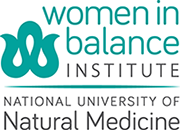 A Guide to Contraception While Breastfeeding
A Guide to Contraception While Breastfeeding
Breastfeeding is nature’s birth control. The hormone prolactin, tells our body to produce milk and also conveniently blocks the hormone Gonadotropin Releasing Hormone, which stimulates ovulation. This ensures that a woman’s body has time to heal from the demands of pregnancy and labor, and gives her precious time to bond with her new baby without introducing another into the mix right away. This is not a fool-proof system though. Without a backup form of birth control, many women become pregnant again shortly after giving birth, even if they are breastfeeding. The following information can help guide a woman as she navigates the world of family planning while breastfeeding.
How soon can a woman become pregnant after childbirth?
For most women, ovulation and fertility resume between six weeks to three months after delivery, though some women may become fertile again after only 25 days. Since many women resume sexual activity by six weeks and it is impossible to predict when a particular woman’s body will begin to ovulate again, contraceptive plans should be discussed and prepared for during prenatal visits. Ovulation often occurs before the first menstrual bleeding post-birth, so it is not safe to wait for a woman’s period to return to begin using birth control.
How effective is breastfeeding as a form of contraception?
Breastfeeding naturally prevents ovulation, though this is only true if a woman is breastfeeding exclusively. In this case, The baby is fed breast milk alone- no supplemental foods or liquids are given, and is fed every four hours during the day and every six hours at night. If the baby is less than six months old and the woman’s period has not returned, breastfeeding exclusively will provide about 98% protection from pregnancy. After the child is six months old or once the woman’s menses returns, breastfeeding exclusively becomes an unreliable form of pregnancy prevention and a second type of contraception should be considered.
What other forms of contraception are safe to use while breastfeeding?
The following options can be discussed with your physician to determine the best form of birth control for you:
Barrier Methods (condoms, diaphragm, cervical cap, fem cap): Hormone-free barrier methods are preferred by many breastfeeding women as there is no risk of hormones entering the woman’s system or her breast milk. Please Note: As a woman’s cervix changes during pregnancy and delivery, cervical caps and diaphragms must be refitted at six weeks post-birth.
Intrauterine Device (IUD): There are two types of IUDs available in the US: the hormone-free copper IUD (ParaGard) and the progestin-releasing IUDs (Mirena and Skyla). ParaGard is effective for up to 10 years, while Mirena and Skyla are effective for five years and three years, respectively. Both types of IUD are safe to insert at 4-6 weeks post-birth, though ParaGard may be inserted immediately after delivery if the woman desires this. Immediate IUD insertion is convenient for many women, though it does increase the risk that the IUD will be expelled from the uterus.
Progestin-only contraception: This includes the mini pill, implant (Implanon), and injectable (Depo-Provera) forms of birth control. These forms of hormonal contraception do not include estrogen and are all generally considered safe to start immediately following delivery. This is somewhat controversial, as there is concern that progestin may interfere with a woman’s milk supply, so some consider it safest to wait until six weeks postpartum to begin this form of contraception.
Estrogen-Progestin combined contraception: This includes many oral contraceptive pills, the patch (Ortho Evra), and the vaginal ring (NuvaRing). Estrogen supplementation is not recommended during breastfeeding because the estrogen can pass into the milk supply and affect the baby’s health. Also, women naturally have an increased risk for blood clots during the postpartum period. Since estrogen increases a woman’s risk for clotting, these contraceptives should be avoided until a woman’s clotting risk return to normal levels. It is generally safe for women to begin using estrogen-containing contraceptives at 4-6 weeks postpartum, as long as there are no additional risk factors for blood clots and breastfeeding has been discontinued.
Tubal Ligation: This is the most common female sterilization procedure in the US, and can be done immediately following delivery if the woman does not plan on having more children.
Fertility Awareness-Based Methods (FAMs): These methods include temperature tracking, checking cervical mucus, and charting menstrual cycles on a calendar, which all focus on tracking ovulation and avoiding intercourse (or using barrier contraception) during times of fertility. These methods are especially challenging and unreliable during the postpartum period, as ovulation is often inconsistent and unpredictable at this time.
There are many factors to consider when determining which postpartum contraceptive method is right for you, and a physician should always be consulted to help navigate these decisions.
Resources
- Jennings V. Fertility awareness-based methods of pregnancy prevention. In: UpToDate. Zieman M and Barss VA, ed. UpToDate; 2013. Available at: http://www.uptodate.com Accessed July 31, 2013.
- Kaunitz AM. Postpartum and post-abortion contraception. In: UpToDate. Zieman M and Barss VA, ed. UpToDate; 2013. Available at: http://www.uptodate.com. Accessed July 24, 2013.
- Steube A, et al. Principles of medication use during lactation. In: UpToDate. Lockwood CJ, et al, ed. UpToDate; 2013. Available at: http://www.uptodate.com. Accessed July 24, 2013.
- www.mirena-us.com
- www.paragard.com
- www.plannedparenthood.org
- www.skyla-us.com
By Niki Rarig, NCNM Naturopathic Medicine program and Classical Chinese Medicine program. Edited by Dr Elise Schroeder

